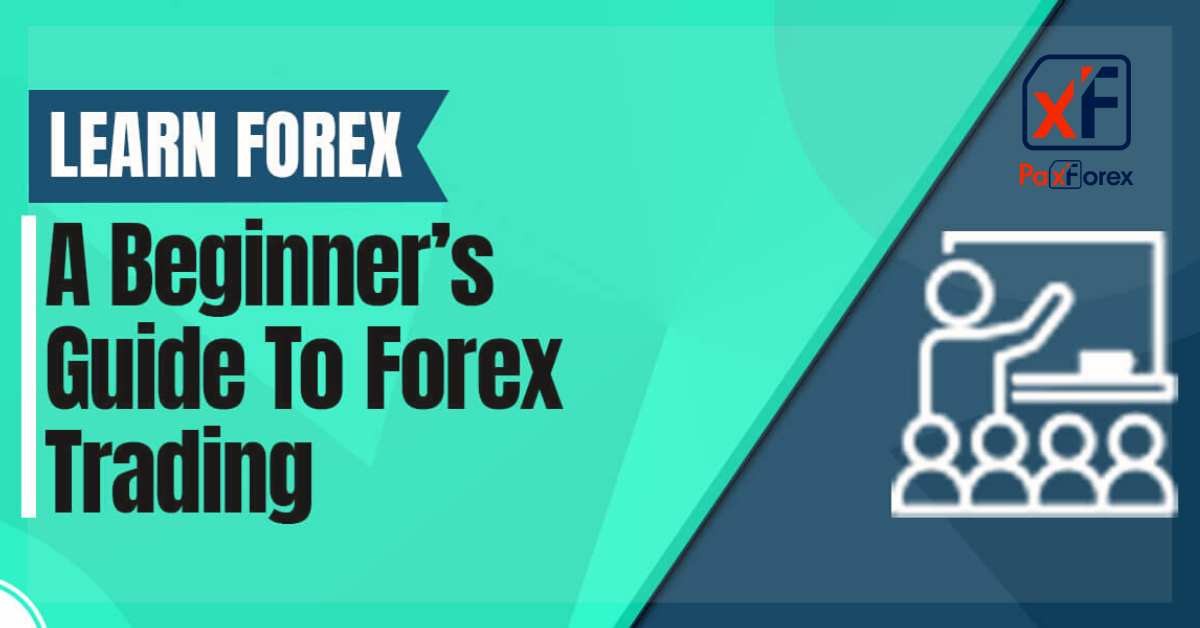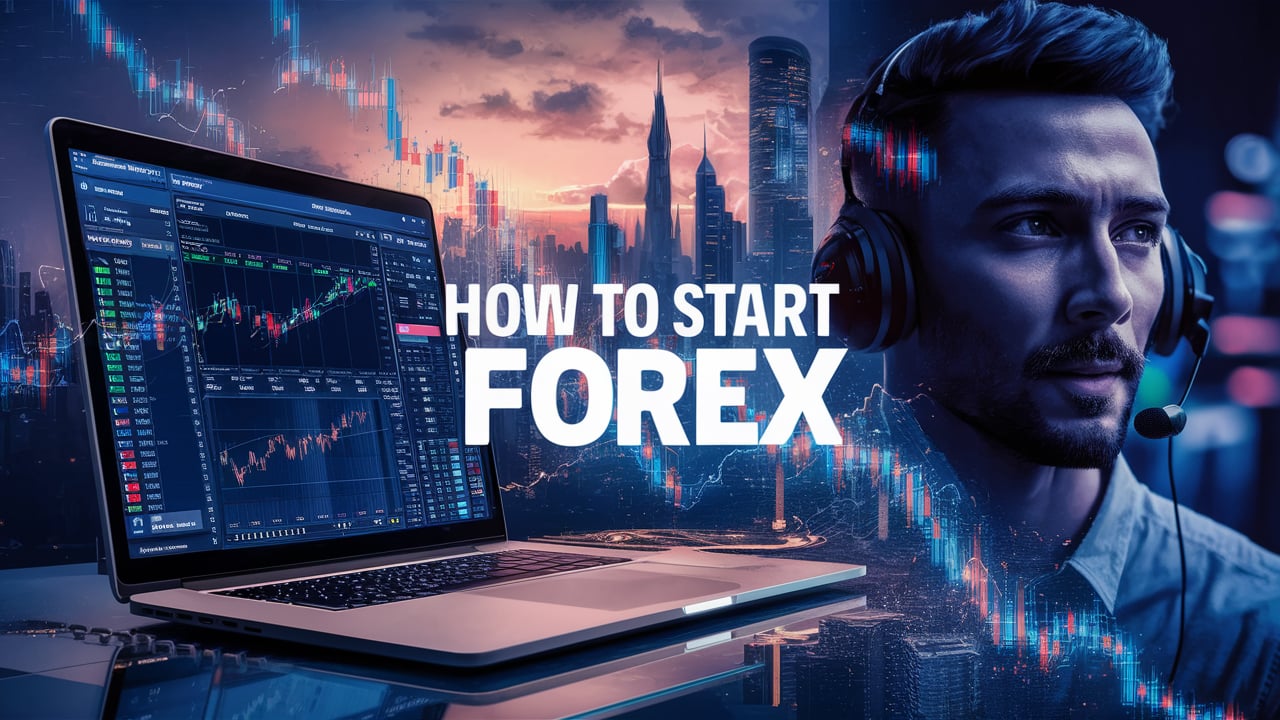To start trading forex, open a trading account with a reputable broker. Next, study market trends and strategies.
Forex trading offers an exciting opportunity to profit from currency fluctuations. Beginners need to understand the basics before diving in. Start by choosing a reliable broker and opening a trading account. Study fundamental and technical analysis to grasp market trends.
Use demo accounts to practice trading without risking real money. Learn risk management techniques to protect your capital. Stay informed about global economic events that can influence currency prices. Join online forums and communities to gain insights from experienced traders. Patience and discipline are key to becoming successful in forex trading. With proper education and practice, you can navigate the forex market effectively.
What Is Forex Trading
Forex trading, also known as foreign exchange trading or FX trading, involves buying and selling different currencies. The goal is to profit from currency value changes. Forex is the largest financial market in the world. Trillions of dollars are traded daily.
Basics Of Forex
Forex trading is conducted over-the-counter (OTC). This means trades happen directly between two parties, not through an exchange. Traders use forex brokers to access the market. The market operates 24 hours a day, five days a week.
Forex trading involves speculating on the price movements of currency pairs. Traders predict whether one currency will rise or fall against another. The forex market is influenced by various factors such as economic data, geopolitical events, and market sentiment.
Currency Pairs
In forex trading, currencies are traded in pairs. Each currency pair consists of a base currency and a quote currency. The base currency is the first currency in the pair, while the quote currency is the second.
Here are some common currency pairs:
- EUR/USD (Euro/US Dollar)
- GBP/USD (British Pound/US Dollar)
- USD/JPY (US Dollar/Japanese Yen)
- USD/CHF (US Dollar/Swiss Franc)
Currency pairs are categorized into three types:
- Major Pairs: These involve the most traded currencies. Examples include EUR/USD, GBP/USD, and USD/JPY.
- Minor Pairs: These do not include the US Dollar. Examples are EUR/GBP and AUD/JPY.
- Exotic Pairs: These include one major currency and one emerging-market currency. Examples are USD/TRY (US Dollar/Turkish Lira) and USD/ZAR (US Dollar/South African Rand).
The value of a currency pair is determined by comparing the two currencies. For example, if EUR/USD is 1.20, it means 1 Euro equals 1.20 US Dollars.
Benefits Of Forex Trading
Forex trading offers a range of benefits that attract many investors. It provides unique opportunities for profit and growth. Understanding these benefits can help you decide if forex trading is right for you.
High Liquidity
The forex market has high liquidity. This means you can buy and sell currencies easily. Liquidity ensures that transactions happen quickly. It also means that you can enter and exit trades without delays. High liquidity often leads to tighter spreads. This can reduce your trading costs.
24-hour Market
The forex market operates 24 hours a day. This allows you to trade at any time. You can fit trading into your schedule. The market is open five days a week. You can trade from Monday to Friday. This continuous operation provides many opportunities to make profits. You can respond to market news and events in real-time.
| Benefit | Description |
|---|---|
| High Liquidity | Quick transactions and low trading costs |
| 24-Hour Market | Trade any time, five days a week |
- High Liquidity – Easy to buy and sell currencies
- 24-Hour Market – Trade at any time
Risks In Forex Trading
Forex trading offers high rewards. It also carries significant risks. New traders must understand these risks to succeed. This section explains the key risks in forex trading.
Market Volatility
The forex market is very volatile. Prices can change very quickly. This volatility can lead to big profits. It can also cause big losses. Understanding market trends is crucial.
Traders should use tools to manage volatility. Tools like stop-loss orders can help. These tools limit potential losses. Always stay informed about market news. News can impact currency prices dramatically.
Leverage Risks
Leverage allows traders to control large amounts with little capital. This can amplify profits. It also amplifies losses. For instance, with 1:100 leverage, $1 controls $100. A small move can have a big impact.
Using high leverage is risky. It can wipe out your account quickly. New traders should start with low leverage. This helps manage risk better. Understand how leverage works before using it.
| Risk Type | Description | Management Tools |
|---|---|---|
| Market Volatility | Rapid price changes | Stop-loss orders, market news |
| Leverage Risks | Amplified profits and losses | Low leverage, risk management |
Understanding these risks is essential. Proper risk management can protect your investment. Always trade wisely and stay informed.

Credit: paxforex.org
Choosing A Forex Broker
Starting your journey in forex trading can be exciting yet challenging. One of the most important steps is choosing a forex broker. A good broker can make your trading experience smooth and profitable. Below are key factors to consider while selecting a forex broker.
Regulation And Safety
First, ensure your broker is regulated. A regulated broker follows strict rules to protect your funds. Look for brokers regulated by respected authorities such as:
- Financial Conduct Authority (FCA)
- Commodity Futures Trading Commission (CFTC)
- Australian Securities and Investments Commission (ASIC)
Check the broker’s website for regulatory details. Verify these details on the regulator’s official site. It’s crucial for your broker to keep your funds in segregated accounts. This ensures your money is safe even if the broker faces financial trouble.
Trading Platforms
The trading platform is your gateway to the forex market. A good platform should be user-friendly and feature-rich. Popular trading platforms include:
- MetaTrader 4 (MT4)
- MetaTrader 5 (MT5)
- cTrader
These platforms offer advanced charting tools, technical analysis, and automated trading features. Ensure the platform is compatible with your devices. Mobile trading options can be very convenient.
Test the platform using a demo account. This lets you understand its features without risking real money.
| Platform | Key Features |
|---|---|
| MetaTrader 4 (MT4) | Customizable charts, automated trading, multiple indicators |
| MetaTrader 5 (MT5) | Advanced charting, more timeframes, additional order types |
| cTrader | Enhanced charting, fast order execution, easy navigation |
Choosing the right broker and trading platform sets the foundation for your trading success. Take your time to research and make an informed decision.
Setting Up A Trading Account
Setting up a trading account is the first step in your forex trading journey. This process is simple yet crucial. It ensures you have the right tools and resources to succeed. Let’s dive into the steps involved.
Account Types
Choosing the right account type is essential. Different accounts cater to different traders.
| Account Type | Description |
|---|---|
| Standard Account | Best for experienced traders. It offers higher leverage. |
| Mini Account | Suitable for beginners. It requires a smaller initial deposit. |
| Micro Account | Ideal for new traders. It allows trading with very small amounts. |
Verification Process
The verification process ensures your account’s security and compliance. This involves several steps:
- Submit Personal Information: Provide your name, address, and contact details.
- Upload Identification Documents: A passport or driver’s license is usually required.
- Proof of Address: This can be a utility bill or bank statement.
- Review and Approval: The broker reviews your documents. Approval can take a few days.
Once verified, you can start trading. Ensure you choose a reliable broker. This makes your trading journey smooth and secure.
Fundamental Analysis
Fundamental Analysis is crucial for forex trading. It involves studying economic data and news events. Understanding these factors helps traders make informed decisions.
Economic Indicators
Economic indicators provide insights into a country’s economic health. Key indicators include GDP, unemployment rates, and inflation. These factors influence currency value.
| Indicator | Description |
|---|---|
| GDP | Gross Domestic Product shows a country’s economic performance. |
| Unemployment Rate | Measures the percentage of unemployed people looking for jobs. |
| Inflation | Indicates the rate of price increases in an economy. |
Monitoring these indicators helps predict currency movements. A strong economy often leads to a stronger currency.
News Impact
News events can cause significant fluctuations in currency values. Major events include elections, trade agreements, and natural disasters.
- Elections: Political stability affects investor confidence.
- Trade Agreements: Can boost or weaken currencies based on terms.
- Natural Disasters: Can disrupt economic activities and currency values.
Traders should stay informed about global news. Following reliable news sources is essential.
Reacting quickly to news events can maximize profits. Always verify news before making trading decisions.
Technical Analysis
Technical analysis is a key part of forex trading. It helps traders predict price movements. This method uses past data to make decisions. Here, we explore chart patterns, indicators, and tools.
Chart Patterns
Chart patterns are visual formations on a price chart. They help traders spot trends and make predictions.
- Head and Shoulders: This pattern shows a reversal in a trend.
- Double Tops and Bottoms: These indicate a trend change.
- Triangles: Triangles can be ascending, descending, or symmetrical.
Recognizing these patterns is crucial. They give clues about future price movements.
Indicators And Tools
Indicators and tools assist in analyzing price data. They provide insights into market trends.
Here are some essential indicators:
- Moving Averages: This tool smooths out price data.
- Relative Strength Index (RSI): RSI measures the speed of price changes.
- MACD: MACD stands for Moving Average Convergence Divergence. It shows the relationship between two moving averages.
Using these tools can enhance your trading strategy. They help make informed decisions based on data.
| Indicator | Use |
|---|---|
| Moving Averages | Identify trend direction |
| RSI | Measure speed of price changes |
| MACD | Analyze relationship between moving averages |
Incorporating both chart patterns and indicators can improve your trading skills. They help you understand the market better.
Developing A Trading Strategy
Creating a solid trading strategy is crucial for success in Forex trading. A well-thought-out plan helps you make informed decisions. It minimizes risks and maximizes profits. Let’s explore two key components of a good trading strategy: Risk Management and Position Sizing.
Risk Management
Risk management protects your investments and ensures long-term success. Always know how much you can afford to lose. Here are some essential tips for effective risk management:
- Set Stop-Loss Orders: Protect your capital by setting stop-loss orders. This automatically closes a trade when it reaches a certain price.
- Use Take-Profit Orders: Secure your profits by setting take-profit orders. This closes a trade when it hits a target price.
- Diversify Your Portfolio: Spread your investments across different currency pairs. This reduces the impact of a single losing trade.
- Stay Informed: Keep up with market news and economic indicators. This helps you make better trading decisions.
Position Sizing
Position sizing determines how much you should trade on each position. Proper position sizing minimizes losses and optimizes gains. Consider these factors:
- Account Size: Your position size should be a small percentage of your account size.
- Risk Tolerance: Determine how much risk you’re comfortable taking on each trade.
- Market Conditions: Adjust your position size based on market volatility and trends.
- Leverage: Be cautious with leverage. It can amplify both gains and losses.
| Factor | Consideration |
|---|---|
| Account Size | Trade a small percentage of your total account. |
| Risk Tolerance | Know how much risk you can handle per trade. |
| Market Conditions | Adapt your position size to market trends. |
| Leverage | Use leverage carefully to avoid large losses. |
By focusing on risk management and position sizing, you’ll develop a strong trading strategy. This will guide you in making smart, informed decisions. Happy trading!
Practicing With Demo Accounts
Starting your forex trading journey can feel overwhelming. A demo account is a great way to begin. It allows you to learn without risking real money. This guide will explain how demo accounts work.
Benefits Of Demo Trading
- Risk-Free Learning: You trade with virtual money. No risk of losing real money.
- Understanding the Platform: Get familiar with the trading platform. Practice placing trades and setting stop losses.
- Testing Strategies: Try out different trading strategies. See what works without financial risk.
- Building Confidence: Gain confidence in your trading skills. This is crucial before you start live trading.
Transition To Live Trading
Once you feel confident with demo trading, it’s time to go live. Here are steps to make a smooth transition:
- Start Small: Begin with a small amount of real money. This helps manage risk.
- Use the Same Strategies: Apply the strategies that worked in the demo account. Consistency is key.
- Emotional Control: Trading real money can be emotional. Practice staying calm and sticking to your plan.
- Review and Adjust: Regularly review your trades. Make adjustments as needed for better results.
By practicing with a demo account, you prepare yourself for real trading. This practice builds skills, confidence, and better trading habits.

Credit: www.amazon.com
Continuous Learning And Improvement
Forex trading is a journey that requires dedication and persistence. Success in this field isn’t achieved overnight. It demands continuous learning and improvement. As markets evolve, traders must stay updated. They must refine their skills and strategies. This section explores two key aspects of ongoing development.
Educational Resources
Access to quality educational resources is crucial. There are many ways to learn about forex trading. Here are some common resources:
- Books: Many books cover forex trading basics and advanced strategies.
- Online Courses: Websites offer structured courses for all levels.
- Webinars: Live sessions where experts share insights and answer questions.
- Forums: Platforms where traders discuss strategies and experiences.
- Videos: Tutorials and lectures available on platforms like YouTube.
Each resource type offers unique benefits. Books provide in-depth knowledge. Online courses and webinars offer interactive learning. Forums and videos provide real-time updates and tips. Utilize a mix of these resources for comprehensive learning.
Keeping A Trading Journal
Maintaining a trading journal is essential for improvement. A journal helps track trades and analyze performance. Here’s how to create one:
- Record Details: Note down trade dates, pairs, and positions.
- Track Outcomes: Document profits, losses, and reasons for each trade.
- Analyze Patterns: Identify successful strategies and common mistakes.
- Review Regularly: Assess your journal weekly or monthly.
A well-maintained journal highlights strengths and weaknesses. It provides insights for strategy adjustments. Regular reviews lead to better decision-making. This practice is invaluable for long-term success in forex trading.

Credit: www.youtube.com
Frequently Asked Questions
How To Start Forex Trading As A Beginner?
Start by researching forex basics and choosing a reliable broker. Open a demo account to practice. Develop a trading strategy. Stay updated with market news. Manage risks wisely.
How Do I Teach Myself To Trade Forex?
Start by studying forex basics and terminology. Use online courses, read books, and watch tutorials. Practice with a demo account. Follow market news, join trading forums, and track your progress.
Is $100 Enough To Start Forex?
Yes, $100 is enough to start forex trading. Begin with a micro account and practice risk management.
Is $1000 Enough To Start Forex?
Yes, $1000 is enough to start forex trading. Begin with a demo account first to practice.
Conclusion
Starting your Forex trading journey can be exciting and rewarding. Remember to research and practice diligently. Utilize demo accounts before investing real money. Stay updated on market trends and continually refine your strategies. With patience and persistence, you’ll gain confidence and improve your trading skills.
Happy trading!

Luke Mahomet has established herself as a prominent figure in the realm of tips and tricks expertise, showcasing a unique talent for distilling practical insights and solutions across various domains. With a diverse background and an innate curiosity for efficiency and effectiveness, Luke Mahomet has become a trusted source for valuable tips and tricks that span personal development, productivity, and life hacks. Her career is marked by a commitment to simplifying complexities and empowering individuals with actionable advice. Luke Mahomet’s ability to offer practical solutions to everyday challenges, coupled with a knack for uncovering hidden gems of wisdom, has earned her a dedicated following. As a tips and tricks expert, she continues to be a guiding force, helping others navigate the nuances of life and work with practical and inventive solutions that make a meaningful impact.


